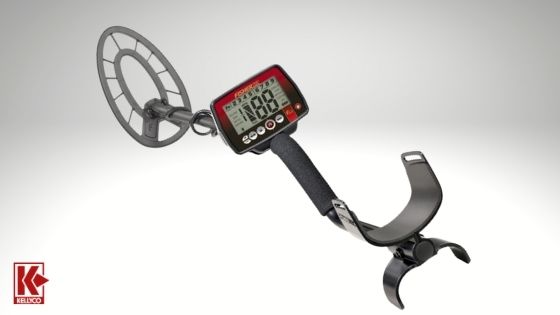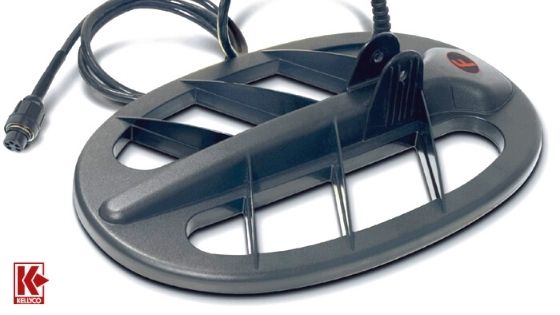Field Test: Fisher F44 Metal Detector with 7×11″ DD Search Coil Review
Published by Jenna Anderson on 08/06/19
Fisher F44

Fisher F44
I took the F44 for another spin on a saltwater beach but this time using the 7×11 DD coil and in a phrase, “big improvement!” The difference from the stock coil was significantly obvious in terms of overall performance on a wet salt beach and in the surf. After stabilizing it with proper manually adjusted ground balance set at 00 and sensitivity settings between 17-18, I was able to detect the target quarter at depths 2 – 2.5 times deeper than with the stock coil previously tested! The sensitivity and separation capability was also improved.
For a single frequency machine in the wet sand, there was the normal mineralization induced chatter when the sensitivity was set too high but even when maxed out at level 20, I picked up the target signal through the chatter. When the sensitivity was decreased to level 18, the F44 quieted and the target sang out in All Metal at 7-9 inches but with no target identification. However, when the target was raised to between 5-6 inches, the quarter was correctly identified. Sensitivity and target separation capability was acceptable when the sweep speed was kept within design limits.
In the surf, again in the All Metal mode, detection depth was approximately 6 inches and in the Coins mode the detection range was 4-5 inches with somewhat erratic target identification.
In damp to dry sand, the F44‘s performance improved over that found in very wet salt water surroundings. Here, I was able to stabilize the F44 at an increased ground balance level of 5 rather than 00 as was required on the lower beach. Sensitivity was again set at 18 in order to significantly quiet the chatter. Using this combination of settings, I was able to nail targets at a range of 8-9 inches in All Metal with acceptable target separation. In the Coins mode, targets were successfully identified at approximately 6 inches…again with acceptable target separation. The junk targets were easily identifiable and distinctly separate from the good ones. The sensitivity of the F44 was best when set at levels 17 and 18 (maximum level being 20). I did notice this coil, like the stock coil, was sensitive to bumps on the hard pack. A degree of intermittent falseing was also present at times throughout the test.

7×11 DD Coil
Summary; as previously reported, the F44 is easy to operate. I found the 7×11 DD coil to be a significant improvement over the stock coil when used on a Central Florida saltwater beach. As we know, single frequency machines can naturally be expected to struggle in wet salt sand and surf but having said that, I’m here to say these most recently fielded entry level machines are in general, great improvements over previous generations. The F44 teamed with the 7×11 DD coil is just such an example. Although a good land machine it was not at all designed for salty beaches, but it can be used there with some degree of success…if ones expectations are realistic and the right coil is used. I would highly recommend those who own the F44 get their hands on a 7×11 DD coil as soon as possible. It’s not only more efficiently sensitive, it is the only one I would use on vacation at the shore.
One final word of caution; as with any detector undergoing field testing, these test results, particularly where depth is reported, reflect and are totally dependent upon the specific test environment where the level of mineralization in the soil, sand and water is concerned. This same F44 tested in the black sands and soil of Hawaii or the Arizona desert for example or even on other beaches, can be expected to perform differently than it does in Central Florida. The depth levels reported above cannot be universally expected as accurate in all cases. Detectable depth is determined by a myriad of external variables such as mineralization, target orientation within the ground, target alloy composition and at times, electromagnetic interference (EMI). In other words, “your mileage may vary.”
